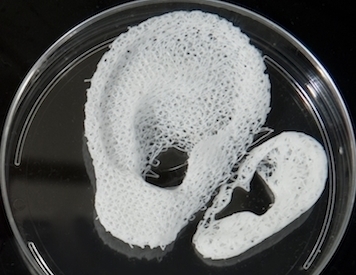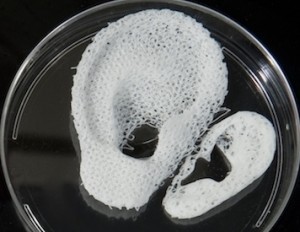The Promise of 3D Printing Organs

Hyun-Wook Kang, researcher at Wake Forest University Institute for Regenerative Medicine (WFIRM) , kidney printer, seeding cells on to a kidney scaffold, the printer seeds differnt types of cells onto various scaffolds including ear cartilage, bone(finger, and kidney.
Latest News
November 23, 2016
3D printing and artificial intelligence are among the technologies poised to help streamline and automate healthcare processes, said panelists at the Fortune’s Brainstorm Health conference in early November.
Dr. Anthony Atala, director at the Wake Forest Institute for Regenerative Medicine, pointed to 3D printing as a way to automate and scale the creation of transplant organs in order to address donor organ shortages. Wake Forest has already been able to grow cartilage, muscle, bladders, transplant skin, vaginal organs, kidney cells and other organs using patient tissue.
“All these were created by hand,” he told the audience. “So the concept really is, how can we automate it, how can we scale it up? And that’s where 3D printing comes in.”
Researchers at Wake Forest are already using modified ink jet technology to build tissue and organ prototypes to help address the growing shortage of donor organs.
“How can you actually get more organs and tissues into patients? We now have a major health crisis in terms of the shortage of organs,” Atala said. “That is because we’re living longer, we’re aging better, and the longer we live the more your organs will fail. In a 10-year period, the actual people on the wait list has doubled waiting for a transplant or an organ. In the same time period, [there has been] less than a 1% increase in the number of transplants.”
Earlier this year, scientists there reported they had printed ear, bone and muscle structures that were then implanted into animals. The material matured into functional tissue and developed blood vessels. The Integrated Tissue and Organ Printing System (ITOP) deposits plastic-like materials to form a shape for the tissue along with water-based gels containing cells. Micro-channels printed in the structures allow nutrients and oxygen to diffuse into the material to keep them live as they develop blood vessels.
In addition, Wake Forest 3D prints scaffolds on which to grow new organs.
Executives from IBM Watson and Athenahealth also discussed the use of AI technology to improve diagnosis accuracy.
Subscribe to our FREE magazine, FREE email newsletters or both!
Latest News
About the Author
Brian Albright is the editorial director of Digital Engineering. Contact him at [email protected].
Follow DE






